Q390ND steel pipe, as a high-strength low-alloy structural steel, is widely used in construction, bridges, machinery manufacturing, and other fields due to its excellent mechanical properties and welding characteristics. In the naming of this steel, "Q" represents yield strength, "390" means that the yield strength is not less than 390MPa, "N" represents delivery in normalized state, and "D" indicates that its quality grade is D grade, with good low-temperature impact toughness.
First, the material characteristics and standard specifications of
Q390ND straight seam steel pipe
The chemical composition of Q390ND steel has been carefully designed, the carbon content is controlled below 0.18%, and appropriate amounts of alloying elements such as manganese, silicon, vanadium, and niobium are added. This composition design ensures that it maintains good plasticity and toughness while ensuring strength. According to the GB/T 1591-2018 "Low Alloy High Strength Structural Steel" standard, the yield strength of Q390ND steel must be ≥390MPa, the tensile strength is between 490-650MPa, and the elongation is not less than 20%. It is particularly noteworthy that the D-grade quality requires the impact energy of steel to be not less than 34J at -20℃, which makes it particularly suitable for engineering projects in cold areas.
Second, the production process of straight seam steel pipes
The production process of Q390ND straight seam steel pipes is very rigorous, mainly including the following key links:
1. Plate pretreatment: Select Q390ND steel plates that meet the standards as raw materials, and first perform ultrasonic flaw detection to ensure that there are no defects inside. Then, according to the pipe diameter requirements, the edge of the steel plate is processed into a specific groove shape by a milling machine to prepare for subsequent welding.
2. Forming process: Using JCOE (progressive bending forming) technology, the flat plate is gradually bent into a tube through multiple progressive bends. During this process, the forming angle and curvature radius must be precisely controlled to ensure the geometric dimensions of the tube blank are accurate. The formed tube blank needs to be pre-welded and fixed to maintain a stable shape.
3. Welding process: Use multi-wire submerged arc welding (SAW) process for main welds. Internal welding usually uses 3-4 wires in series submerged arc welding, and external welding uses 2-3 wires in series submerged arc welding. The welding speed is controlled at 1.2-1.8m/min. During the welding process, parameters such as current, voltage, and welding speed need to be monitored in real time, and online heat treatment technology is used to eliminate welding residual stress.
4. Diameter expansion and inspection: The welded steel pipe needs to be mechanically expanded to eliminate the shape deviation generated during the forming and welding process and improve the dimensional accuracy. Subsequently, 100% ultrasonic flaw detection, X-ray detection, and water pressure test are carried out to ensure that the quality of the steel pipe meets the requirements of standards such as API 5L or GB/T 9711.
5. Anti-corrosion treatment: Depending on the application environment, anti-corrosion processes such as epoxy coal tar, 3PE, or galvanizing can be selected. Before anti-corrosion, sandblasting and rust removal are required to achieve Sa2.5 surface treatment standards.
Third, the application fields and engineering cases of Q390ND straight seam steel pipes
Q390ND straight seam steel pipes play an important role in many fields due to their high strength and good toughness:
1. In large steel structure buildings, Q390ND steel pipes are often used for columns and main beams of super high-rise buildings. For example, a 380-meter-high landmark building in Beijing uses Q390ND straight seam steel pipes with a diameter of 1.2 meters and a wall thickness of 40mm as core tube columns, successfully reducing the deadweight of the structure by more than 15%.
2. In bridge engineering, Q390ND steel pipes are particularly suitable for chords and webs of large-span arch bridges. The main arch ribs of a Yangtze River Bridge in Wuhan use Q390ND steel pipes with a diameter of 1.5 meters, which still ensure good welding quality in a winter construction environment of -15℃.
3. In the energy field, Q390ND straight seam steel pipes are widely used in high-pressure oil and gas pipelines. Some sections of the natural gas pipeline project have selected X80 grade (equivalent to Q390ND improved type) straight seam steel pipes, with a working pressure of 12MPa, showing excellent compression and crack resistance.
4. In addition, in the manufacturing fields of heavy equipment such as port machinery, mining equipment, and wind power towers, Q390ND steel pipes are also favored for their excellent fatigue performance. After the main arm structure of a certain brand of large port cranes adopted Q390ND steel pipes, the service life was extended by more than 30%.
Fourth, the market status and development trend of Q390ND straight seam steel pipes
According to statistics from the China Iron and Steel Industry Association, the market size of high-strength steel pipes in my country will reach 8.5 million tons in 2024, of which Q390ND grade products account for about 25%. With the advancement of the "dual carbon" goal, the demand for lightweight design continues to grow, and it is expected that the annual demand for Q390ND steel pipes will exceed 3 million tons by 2026.
In terms of technological innovation, the industry is moving in the following directions:
1. Develop higher-strength Q460ND, Q550ND and other grade products to meet the needs of super-high-rise buildings and super-long span bridges;
2. Develop Cu-P-Cr-Ni alloy steel with stronger weather resistance to extend outdoor service life;
3. Promote intelligent welding technology, such as a laser visual tracking system, to improve welding quality and efficiency;
4. Develop environmentally friendly anti-corrosion coatings to reduce VOC emissions during construction.
Fifth, Q390ND straight seam steel pipe usage recommendations and precautions
In actual engineering applications, the following points should be paid special attention to when using Q390ND straight seam steel pipes:
The anisotropy of the material should be fully considered in the design stage. There are differences in the axial and circumferential properties of straight seam steel pipes. It is recommended to conduct full-scale test verification for important structures. The welding process must pass the assessment test, and it is recommended to use low-hydrogen electrodes (such as E5015-G) and a protective gas combination of 80%Ar+20%CO2. For thick-walled steel pipes (t≥25mm), they need to be preheated to 120-150℃ before welding, and the interlayer temperature should be controlled below 200℃.
During the hoisting and transportation process, special hoists should be used to avoid local stress concentration, and sufficient support points should be set when stacking to prevent deformation. Moisture-proof measures should be taken during storage at the construction site, and the welded end faces should be protected with protective covers.
In terms of quality control, it is recommended to conduct third-party supervision inspection, focusing on checking the ultrasonic flaw detection report and mechanical property retest report of the weld. For pipes used in important structures, it is possible to consider adding a drop weight tear test (DWTT) to evaluate the material's resistance to brittle fracture.
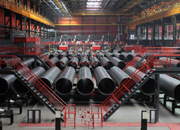 Threeway Steel is known as a professional supplier engaged in manufacturing and distributing a wide range of steel pipe, and our headquarter located the central part of China – Hunan and six associated factories throughout China.
Threeway Steel is known as a professional supplier engaged in manufacturing and distributing a wide range of steel pipe, and our headquarter located the central part of China – Hunan and six associated factories throughout China.
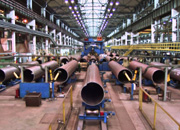 Threeway Steel is known as a professional supplier engaged in designing, manufacturing and distribution of a wide range of steel products with the headquarter located the central part of China – Hunan and six associated factories throughout China.
Threeway Steel is known as a professional supplier engaged in designing, manufacturing and distribution of a wide range of steel products with the headquarter located the central part of China – Hunan and six associated factories throughout China.
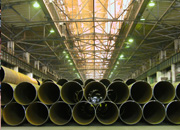 Threeway Steel is known as a professional supplier engaged in designing, manufacturing and distribution of a wide range of steel products with the headquarter located the central part of China – Hunan and six associated factories throughout China.
Threeway Steel is known as a professional supplier engaged in designing, manufacturing and distribution of a wide range of steel products with the headquarter located the central part of China – Hunan and six associated factories throughout China.
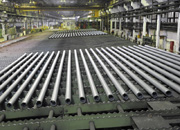 Threeway Steel is known as a professional supplier engaged in designing, manufacturing and distribution of a wide range of steel products with the headquarter located the central part of China – Hunan and six associated factories throughout China.
Threeway Steel is known as a professional supplier engaged in designing, manufacturing and distribution of a wide range of steel products with the headquarter located the central part of China – Hunan and six associated factories throughout China.
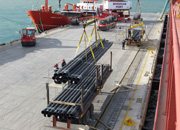 Threeway Steel is known as a professional supplier engaged in designing, manufacturing and distribution of a wide range of steel products with the headquarter located the central part of China – Hunan and six associated factories throughout China.
Threeway Steel is known as a professional supplier engaged in designing, manufacturing and distribution of a wide range of steel products with the headquarter located the central part of China – Hunan and six associated factories throughout China.

